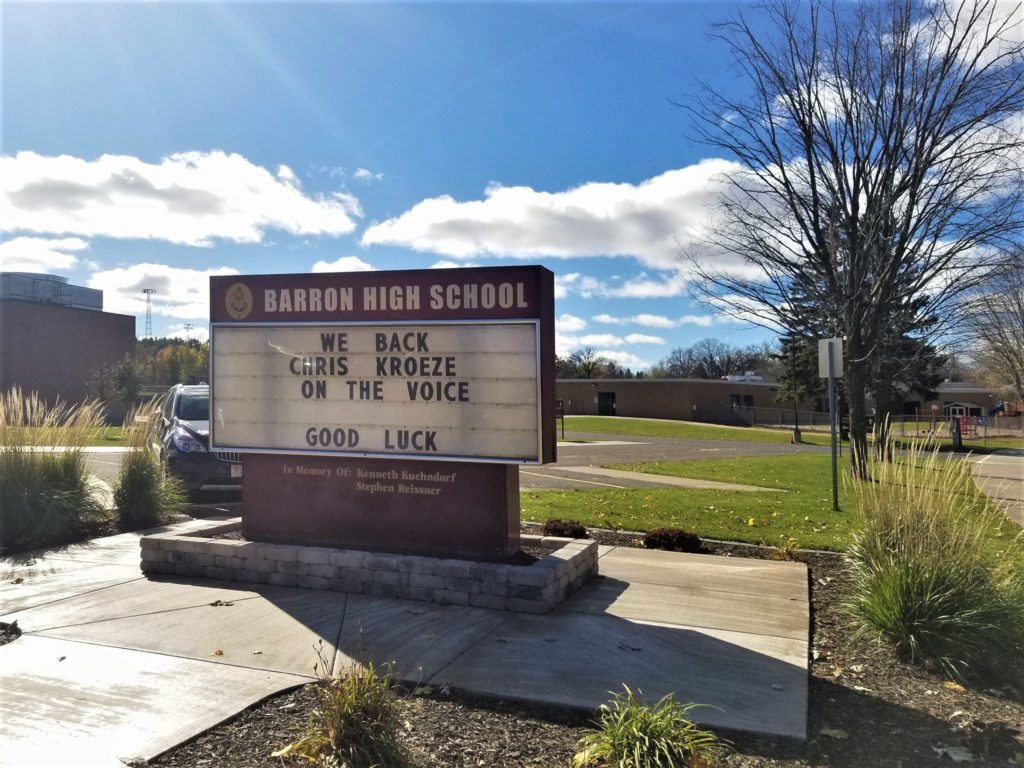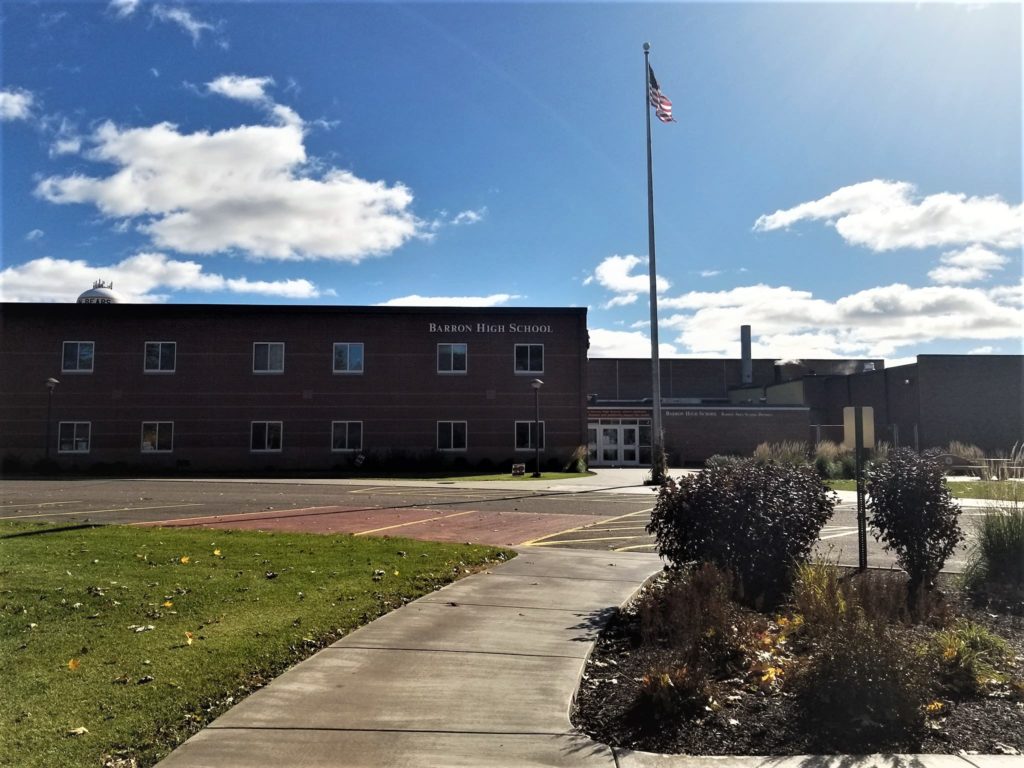The classrooms looked like many of the other classrooms in the Barron High School. Desks were placed in rows, their cream-colored tops all arranged in vertical lines. Posters and sayings lined the walls, displaying a personal touch of each of the teachers in the school.
But the English as a Second Language (ESL) classrooms were different from the rest of the high school and from most of the high schools in rural Wisconsin.
Students sat in the same cream-colored desks and joked around with each other, just as in many of the other classrooms across the school. The girls giggled together, often making fun of one of the boys in the room while a group of boys laughed and talked about the soccer game the night before. The girls wore brightly colored jilbabs, with matching headscarves to cover, while the boys wore a mix of soccer gear, traditional American clothes, along with their traditional prayer outfits.
These kids, as they all joked around and got ready for their school day at this rural Wisconsin high school, shared a history among them. Most of them had left Africa when they were young, many living in crowded refugee camps in Kenya with poor educations and living conditions. All of the students, about fifteen to twenty in just one of the ESL classrooms, were from Somalia, fleeing for safety and security as the civil war rages on in their homeland.

“Home is Africa,” one of the boys said. The other students who had gathered around to answer questions nodded in agreement.
The students were in high spirits, making jokes in Arabic between each other, complaining about math class, and more. Every one of the students was around the age of 16, some closer to 18 while others had just reached high school.
But their pasts loomed behind them: the country their families fled from for safety, the struggles in the refugee camps, the asylum process and then finally making it to the United States, where their families had to find apartments to rent, jobs, and a way for the children to have a decent education.
“We’re safe here,” a student chimed in.
The voices of the students are always more serious when talking about their pasts. Soccer, classes and stories about their friends lifted their spirits, but for some of the students, it hadn’t been all that long since they lived in Africa.
Seven years. Three years. Two years.
The students had different memories of their homes. There were memories of soccer and a school system that was totally different from the one they were currently attending. But overall, Africa was always home to them.
The students mentioned their names, but due to their ages and history, using their names in the story was something many of the students and the school district weren’t comfortable with.
A Model for the Town?
To people looking into the community of Barron, the high school could be a microcosm for the entire town.
But the high school is different. The Somali students and the “mainstream” students play sports together, often bonding over the passion they felt on the soccer field. It’s only once the students finish their two levels of ESL classes, they move into the mainstream classes with other students in the school.
Soccer has been a component of the entire town, and this wouldn’t be possible if it wasn’t for Monti Hallberg.
“The metaphor I used was soccer served as the bridge to help bring our Somali students together with our whole student body,” he said.
Before Hallberg left Barron to go an be the Superintendent of the American International School of Jeddah in Saudi Arabia, he was responsible for creating the soccer program that still lives on in Barron today.
The program, which began after Hallberg saw a few Somali students playing soccer one day, and after only a few moments of watching them, he could tell this was their sport. Now, the program in Barron has over 400 students involved from age six to 18.
One student, Muhammad, is one of the students who’s most integrated into the mainstream high school. Due to his surprisingly good education in Kenya, he was able to learn English before he came to the United States. After being in the ESL classes for only a short amount of time, he was placed into the mainstream classes where he has a lot of friends, some still in the ESL classrooms, like his brother, and others who have never stepped foot in that wing of the school.
As the youth of Barron are becoming more integrated, this has created cultural issues at home. The elementary school children are speaking English earlier in their lives, often becoming fluent in it instead of their “home language.”
As the students at Barron High School talked about their home lives, one common thread among a lot of them was their role as a translator between their siblings and their parents. The younger children at home have been unable to communicate at home, often needing the aid of an older sibling to tell their parents what they need and want.
Their parents try to learn English, and some are taking classes or learning from their children. But with the language barrier between families, the voices that link the families together often lie on the older kids in the home.
ESL Forever
Inside the ESL classrooms is a small community. The students share common experiences, a common language, a common religion and a common culture.

In Islam, praying five times a day is required. During the school day, there are two prayer times that fall during the day. The Barron High School decided to embrace the religion of the students and turned an old storage area into a prayer room for the students.
Located next to the ESL classrooms, the students are able to leave class during prayer times to pray. A divider in the middle separates the boys from the girls, a practice in the religion.
The classrooms provided a place for this common ground. As students talked about moving out of the ESL classes, they would shake their heads and laugh that they weren’t going to leave ESL.
“ESL forever.” The students said it as they laughed with each other, sharing comments among themselves in both Arabic and English.
In the state of Wisconsin, it’s rare to see a scene like this in a high school. Schools in rural areas are predominantly white. There aren’t prayer rooms or ESL classrooms. In a place where diversity should be difficult to find, Barron found a way to break the norm.
But this is what makes Barron, Barron. The students talked about how they feel accepted. While Africa was home, this small town in northern Wisconsin was where they were growing up.
Africa is home. ESL is forever.
This is life in Barron, Wisconsin.